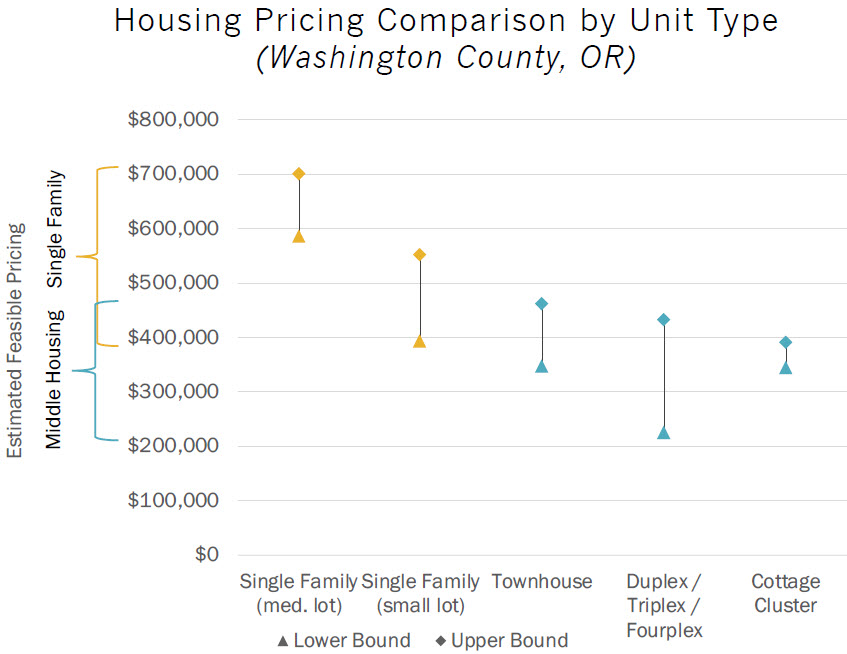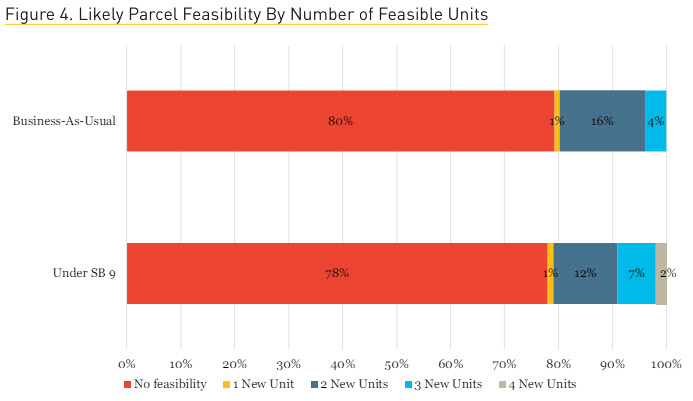On May 13, the Scottsdale REALTORS® association and Greater Phoenix chapter of the Asian Real Estate Association of America hosted a 2024 Housing Opportunities Forum before members, city staffers, elected officials and volunteer leaders.
Keynote speaker Ian Carlton, senior economic advisor for ECOnorthwest and co-founder of MapCraft, presented an introduction to Missing Middle Housing. It was timely because Arizona HB 2720 and 2721 had not yet been signed into law.
“Opticos Design came up with the term ‘Missing Middle Housing‘,” Carlton began. “It’s housing that looks a lot like a single family home but has multiple units (and) fits into the community character. For many years now, we either build single family housing, or big multifamily housing, but we miss the stuff in the middle for the most part.”
Carlton then showed different types of missing middle housing options, including Accessory Dwelling Units or ADUs. “The top two reasons that people built ADUs were to rent it out to others for at least a year, (or to) their family or someone who was essentially caring for someone in their family.”
A survey of ADU owners in three Pacific Northwest cities with mature ADU and short-term rental markets found that 60 percent of ADUs are used for long-term housing as compared with 12 percent for short-term rentals. – AARP Livable Communities
Carlton rhetorically asked if missing middle housing was affordable to middle-income households in places with tight housing supply. “It depends on where you are in a market cycle,” he said. “(But) when units are smaller, they’re cheaper.”
He compared Scottsdale to Washington County, Oregon — home of Nike’s global headquarters and Intel’s largest campus.
“You can see what a single-family home price, built new, is going to sell for to cover the cost of construction and land,” said Carlton referring to the slide below. “As you move right, we’re moving into townhomes, duplexes, cottage clusters. Developers can build those and sell them for less in this market where people could pay a lot, but it ends up still being cheaper to buy those smaller units. This is only possible in this market because legally it’s allowed to build these things.”

Source: ECOnorthwest (2021)
MapCraft also worked on California Senate Bill 9, a provision that basically applied to single-family lots all across the state.
“We ran pro formas for about 350 different housing variations on each parcel,” said Carlton. “For all seven and a half million parcels that are single family parcels in California, there are only about 400,000 parcels out of 7.5 million where development under the law was expected to be financially feasible.
“The key here is on the (top) bar, which is pre-2022, and then the (bottom) bar after the law passed. Those two bars look nearly identical. In those places where it was already feasible to build ADUs, those people had the option to build two or three units instead.”

Source: Terner Center for Housing Innovation (2021)
Did it change neighborhoods considerably?
“In the first year, there were a few hundred applications in all of California to do anything on any land with this law,” Carlton continued. “Your average home price in Scottsdale is $1.1 million. Not many people are going to tear that down to build a duplex. If anything, they might be adding ADUs in the back.”
Related:
Part 1: Advocacy & Workforce Housing
Discovering and Developing Missing Middle Housing
Re-Legalizing Middle Housing
